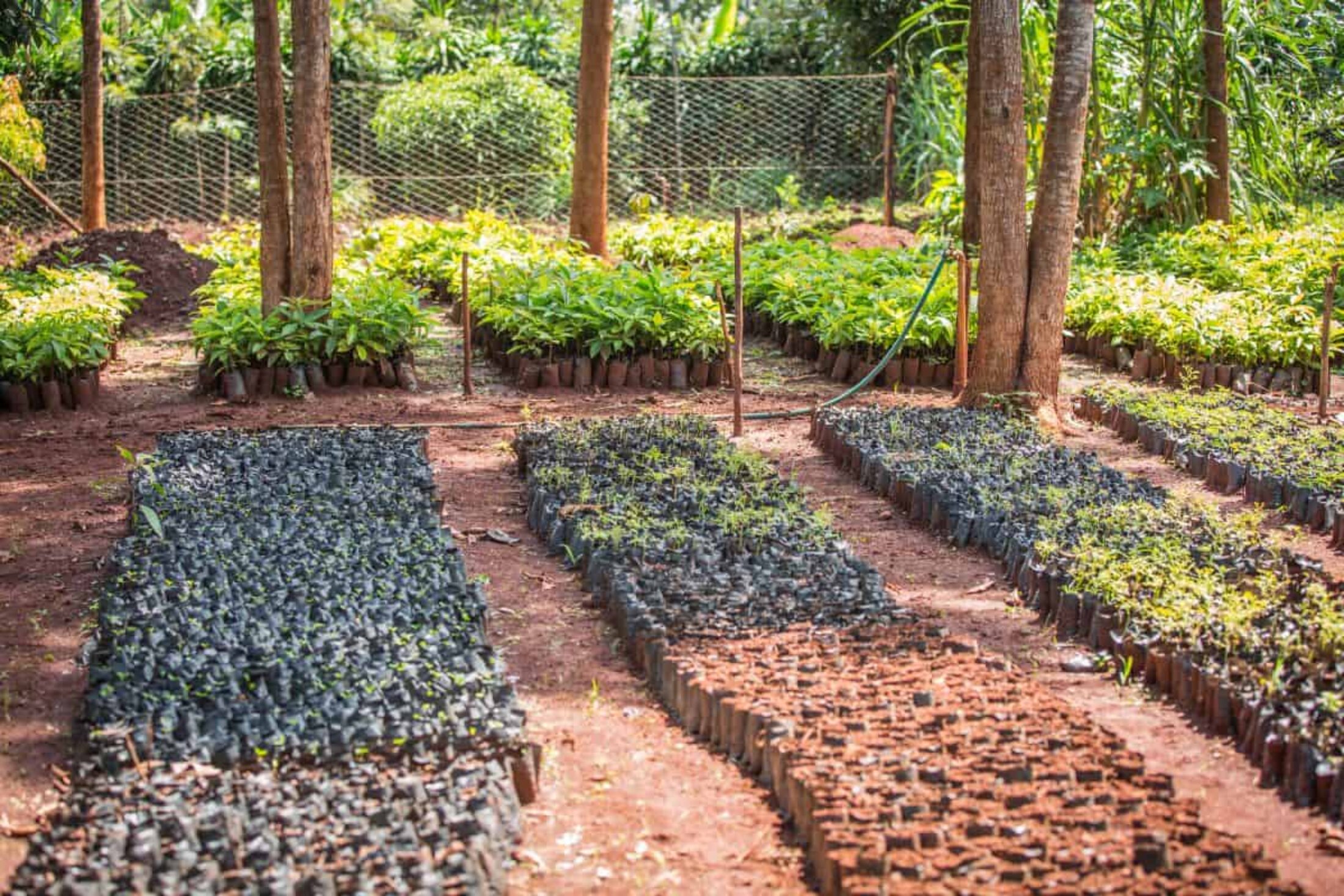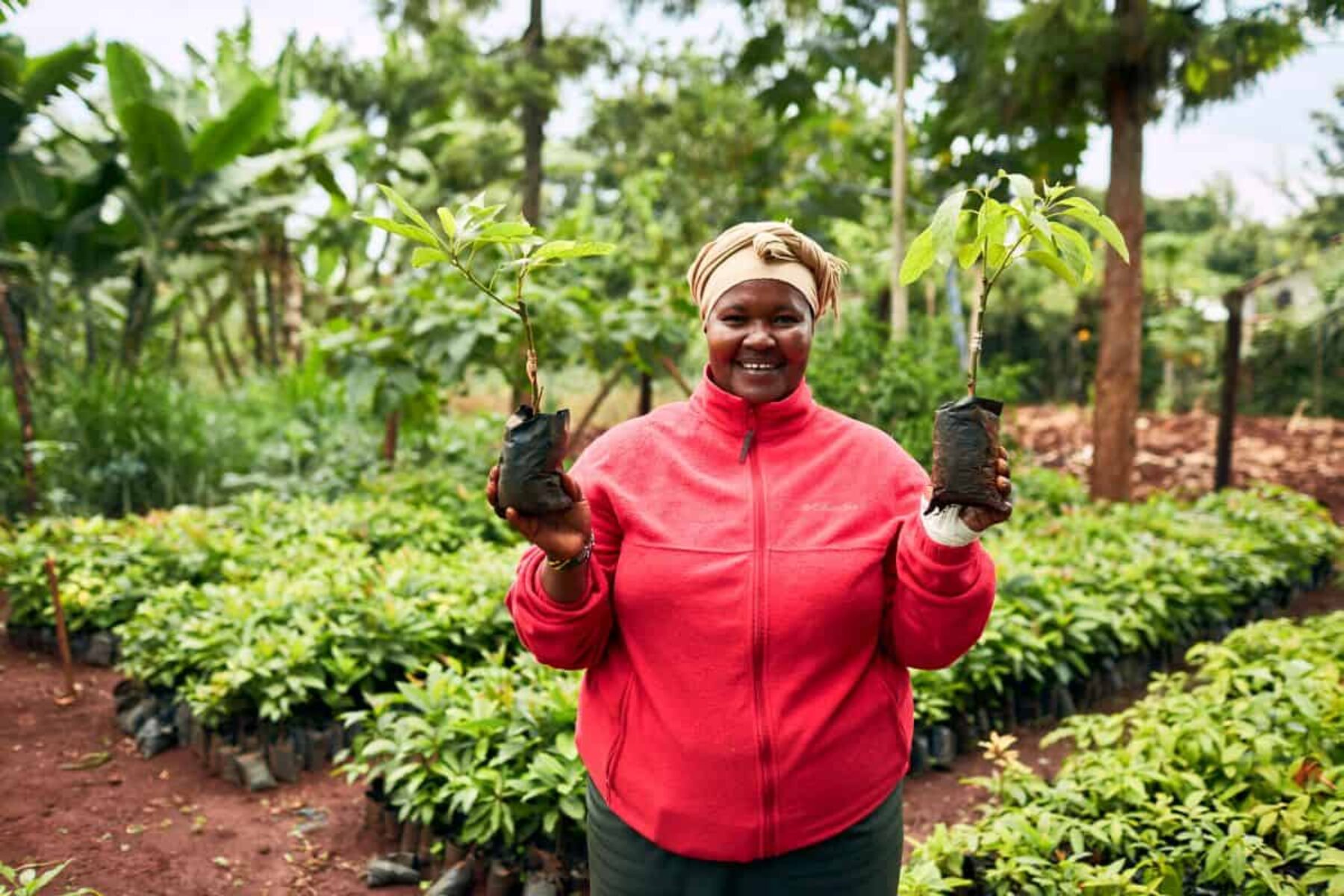Working with NGOs in the global south, Treedom is on a mission to make offsetting make sense by investing in people
So, you want to cut your carbon footprint? Where to start? Drop the plane for the train, cut out the burgers, switch to green energy, swap the light bulbs for LEDs – yup, all the above. But short of becoming the 21st century equivalent of a foraging monk, chances are you’ll still be responsible for the odd tonne or two of CO2.
So, what to do? One answer, of course, is to offset: to ensure your unavoidable emissions are balanced by corresponding cuts elsewhere. There are a host of ways to go about this, but one of the most popular – for sound scientific reasons – is to harness the power of nature’s very own sequestration specialists: trees.
Before you don your wellies and get down and dirty with a spade, you can instead enable others to plant a tree for you. And this coming Earth Day, 22 April, you can even do so by putting your feet up and watching a video (more on that later).
If that sounds like the ultimate ‘armchair activist’ cop-out, read on. Forestry offsets conjure up a not altogether appealing image of vast plantations spreading across the land, but that’s not the only approach.
A more human-scale one is being championed by Treedom, a social enterprise that offers individuals and companies the chance to offset their carbon impact while also boosting the livelihoods of local farmers across the developing world.

It’s rooted in the fact that trees’ benefit to people isn’t restricted to curbing climate change; they can of course also produce all sorts of other stuff, too – like fruits and berries. These in turn produce a much-needed source of income, helping farmers provide for their families, get their kids a decent education and more besides.
It works like this: you estimate how much carbon you need to offset (Treedom provides a simple calculator on its website), and then choose one of the tree species to have planted on your behalf. Each of them are productive trees, mainly fruiting ones such as orange, lemon, mango and papaya, but they also include cacao, coffee and baobab, as well as fodder crops such as leucaena and calliandra.
Treedom has a team of agricultural and forestry experts who work closely with NGOs in rural communities such as Kenya and Cameroon. There, they help train farmers to switch from destructive slash-and-burn practices, which themselves cause climate change, to more sustainable and productive methods. As part of this programme, the tree you’ve financed will be nurtured in a local sapling nursery and then planted out by one of the farmers.
They are shown how to care for it to maximise its chances of survival, and care of the tree is financed until it starts producing, for example, oranges or coffee beans.
I have been able to have a higher milk yield than before, which [helped] me pay for school fees for my children
Treedom’s team makes sure that the tree survives its early, vulnerable years, and if it dies, it’s replaced. In practice, each of the farmers involved in the scheme is given a sizeable number of trees, which, once productive, can make a real difference to their lives.
As Kenyan farmer Bathsheba Motieri explains: “Through the feeding of leucaena and calliandra leaves to my cows, I have been able to have a higher milk yield than before…which [has helped] me to pay school fees for my children. Not only that, the seedlings I got from Treedom, which I planted in at the hedges [and] contours and in alley cropping, have controlled soil erosion thus [giving me] high crop yields.’’
For the purposes of ensuring your emissions really are being offset, Treedom assumes that the tree will survive for at least 10 years (a fairly conservative estimate). And, crucially, they only work in communities that would not otherwise have benefited from any similar schemes. This makes certain that there is no ‘double counting’ – in other words, that the emissions savings delivered by your trees won’t also be allocated to someone else. Each tree is geolocated, so you’ll know exactly where it is, and you’ll even have a photo of it right there in the field.
Oh, and the armchair activism I mentioned? This Earth Day, Treedom is promising to plant one tree for every 1,000 views of its online video. So, put your feet up and get watching. And perhaps, as Treedom hopes, you’ll be inspired to go a step further and sign up to offset all your own CO2, giving a helping hand to a farming family as you do so.
Carbon offsetting: scam or solution?
Carbon offsetting has at times had a bad rap – accused of offering a ‘get out of jail free’ card that allows conscience-stricken westerners to carry on polluting. There might be a smidgen of truth in that – and even more so where the offsets are not strictly monitored to ensure they really are delivering emissions savings.
But for the most part, they are an essential tool for the responsible citizen to minimise their own impact. And offsets like those provided by Treedom offer a double benefit: by working with vulnerable communities in Africa and elsewhere, they not only help curb carbon emissions but also improve the lives, in the here and now, of those who are on the frontline of the impacts of climate change.


